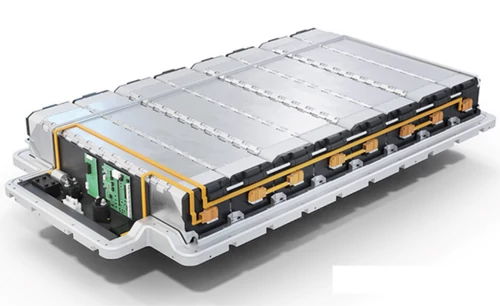battery module process The battery module is a complete battery...
The process flow of vertical section of lithium ion battery pack
Lithium-ion batteries are widely used in portable electronic devices, electric vehicles, and energy storage systems due to their high energy density, long cycle life, and low self-discharge rate. The assembly segment process is a key link in lithium-ion battery manufacturing, which mainly includes four steps: winding, assembly, cell baking and liquid injection packaging. This article will detail these four steps and their importance in the overall battery production.
Winding is the first step in the process of lithium-ion battery assembly, which is directly related to the structure and performance of the battery. In this stage, the positive and negative materials and the diaphragm are stacked in sequence, followed by winding. The steps are as follows:
Material preparation: The coated and roller treated electrode sheet and diaphragm are cut to the appropriate size.
Superposition: The positive electrode, diaphragm and negative electrode are superimposed on each other to ensure that there are no bubbles and impurities between them.
Winding: Use an automatic winding machine to tightly roll up the stacked material to form a cylindrical or square battery cell. The tightness and uniformity of the winding are key factors to ensure the performance of the battery, and reasonable winding can improve the energy density while reducing the internal resistance.
After the winding is completed, the assembly phase is entered. The main task of this link is to combine the wound battery cell with other components to form a complete cell. The assembly process consists of the following steps:
Battery case preparation: Choose a suitable battery case material (usually aluminum or plastic) to ensure that it has good sealing and mechanical strength.
Assembly: Place the wound cell into the battery housing and add the necessary insulation gaskets and connection terminals. Ensure that all components fit tightly in assembly to avoid any loosening.
Quality inspection: After the assembly is completed, strict quality inspection is required to check whether there are problems such as poor contact and leakage to ensure the safety and reliability of the battery.
After the assembly step, the cell needs to be baked. This process is designed to remove moisture and volatile substances inside the battery, thereby improving its performance and lifetime. Key points of the baking step include:
Baking temperature and time control: According to the specifications of the cell, set the appropriate baking temperature and time, usually the temperature is around 100°C, and the duration is several hours.
Dewatering and moisture-proof: through baking, it can effectively remove the moisture inside the battery, and reduce the adverse reactions of the battery in the subsequent injection stage.
Performance improvement: After baking treatment, the electrochemical performance of the cell has been significantly improved, which can better meet the requirements of high-rate charging and discharging.
The final step is injection encapsulation, which involves injecting the electrolyte into the battery and encapsulating it to ensure that the battery is sealed and safe. The injection packaging process mainly includes:
Electrolyte preparation: choose a suitable electrolyte, usually an organic solvent containing lithium salt, to ensure good conductivity of the electrolyte.
Injection: through automatic injection equipment, the prepared electrolyte will be accurately injected into the core. The precise control of liquid injection volume is the key to ensure the performance of the battery.
Encapsulation: After the injection is completed, the battery is encapsulated immediately to prevent any gas or liquid leakage and ensure the stability and safety of the battery during use.
Final inspection: The final inspection of the packaged battery, including air tightness test and capacity test, ensures that each battery meets the factory standard.
Conclusion
The assembly segment process is the core link in lithium-ion battery production, including winding, assembly, cell baking, liquid injection packaging and other steps. Each process has its own unique importance and together guarantees battery performance, safety and service life. With the continuous progress of battery technology, the optimization of assembly process will further promote the application and development of lithium-ion batteries and improve the comprehensive competitiveness of batteries in various electronic devices.

Home energy storage product series
A lithium battery pack for home energy storage systems, which is compatible with solar panels and the sun The inverter can work together with the power grid to power household appliances, and it can also be used as a For off grid systems.
Extended reading
Function analysis of battery pack housing
Function analysis of battery pack housing Battery pack housing is...
THE ESSC Brand promise
Global supply
Our products sell well all over the world, covering many countries and regions, through the global logistics network, to provide customers with convenient purchasing experience.
Rigorous quality
We adhere to the highest quality control standards to ensure every product meets industry regulations and customer expectations, earning trust through consistent excellence.
Excellent service
With a customer-centric approach, we provide prompt responses, professional support, and personalized services, aiming to deliver the best user experience and long-term value.


